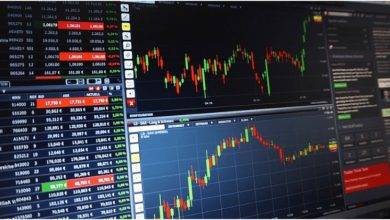
Trading Commodity has been a significant part of the global economy for centuries. From the spice trade of ancient times to the oil boom of the 20th century, commodities have played a crucial role in shaping our world. In recent years, advances in technology have made commodities trading more accessible than ever before, allowing individual investors to participate in this exciting market. However, navigating the complexities of trading can be daunting, especially for beginners.
In this comprehensive guide, explore the fundamentals of commodity trading online, providing you with the knowledge and skills to begin your journey in this exciting field.
What are commodities?
They are raw materials consumed directly or used as inputs in producing other goods. Examples of commodities include crude oil, gold, silver, wheat, corn, and coffee. These goods are traded on global exchanges, with prices fluctuating based on supply and demand.
Types of trading
There are several ways to trade commodities, including futures contracts, options contracts, and spot contracts.
- Futures are contract agreements to buy or sell a commodity at a specific price and time in the future. These contracts are traded on exchanges and can be bought or sold by investors.
- Options are the contracts that give the holder the right, but not the obligation, to buy or sell a commodity at a specific price and time in the future. These contracts are also traded on exchanges and can be used to hedge against price movements.
- Spot contracts involve the immediate delivery of a commodity at the current market price. This type of trading is less common and is typically used by individuals or businesses that require physical commodities for their operations.
Understanding market trends
In commodities trading, it is essential to understand market trends and economic indicators that can affect prices. Some of these factors include:
Supply and demand: As with any market, the price of commodities is influenced by the balance between supply and demand. If a particular commodity is insufficient, prices will likely rise as buyers compete for a limited supply.
Geopolitical events: Political instability, natural disasters, and conflicts can disrupt the supply of commodities, leading to price fluctuations.
Inflation: Commodities are often seen as a hedge against inflation, as their prices tend to rise along with the cost of living.
Currency exchange rates: The value of a commodity is also affected by the exchange rate of the currency used to trade it. For example, if the US dollar weakens, the price of commodities traded in US dollars may rise.
Risk and reward
Commodities trading can be a high-risk, high-reward investment opportunity. While there is the potential for significant profits, there is also the risk of losing money. Some of the risks involved are included:
Price volatility: Commodities’ prices can be highly volatile, with sudden price movements based on unpredictable events.
Leverage: Many commodity trades are leveraged, meaning investors can control a large amount of a commodity with a relatively small investment. While this can lead to significant profits, it can also magnify losses.
Liquidity: The liquidity of some commodity markets can be limited, making it difficult to buy or sell a commodity quickly.
A clear trading strategy to manage and stick to these risks is essential. This strategy should include risk management techniques such as stop-loss orders and position sizing.
Conclusion
Commodity trading online can be an exciting and profitable investment opportunity for beginners. Individuals can make informed investment decisions by following the tips given above. With any investment, it is essential to research, set realistic goals, and have a clear trading strategy. By mastering the art of trading, individuals can diversify their portfolios and potentially achieve significant returns.




